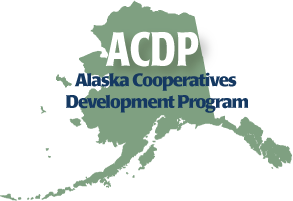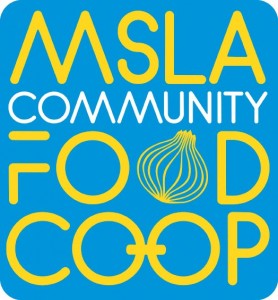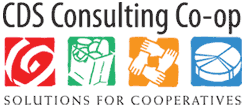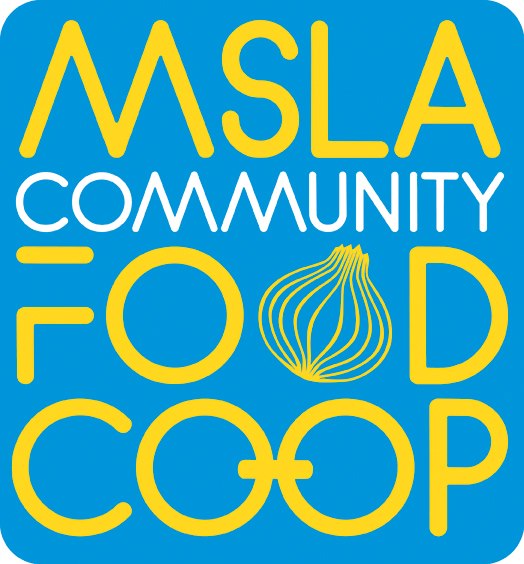This year, 2012, is the International Year of Co-operatives. You knew that, right?
 In recognition – and celebration – the NW Cooperative Development Center, the Alaska Cooperative Development Program, and Mission Mountain Food Enterprise and Cooperative Development Center, are partnering to present “Celebrating Our Food Community,” a conference to consider how cooperative business models will contribute to the future of our local and regional food systems.
In recognition – and celebration – the NW Cooperative Development Center, the Alaska Cooperative Development Program, and Mission Mountain Food Enterprise and Cooperative Development Center, are partnering to present “Celebrating Our Food Community,” a conference to consider how cooperative business models will contribute to the future of our local and regional food systems.
 We had the opportunity to speak with Jan Tusick, Center Director for Mission Mountain Food Enterprise Center, Lake County Community Development Corporation, about her organization’s part in establishing and supporting co-ops in western Montana. The Mission Mountain Cooperative Development Center is located in the small town of Ronan, Montana, 60 miles north of Missoula.
We had the opportunity to speak with Jan Tusick, Center Director for Mission Mountain Food Enterprise Center, Lake County Community Development Corporation, about her organization’s part in establishing and supporting co-ops in western Montana. The Mission Mountain Cooperative Development Center is located in the small town of Ronan, Montana, 60 miles north of Missoula.

GoodFood World: Jan, it seems like food and co-ops are a natural relationship. That the cooperative model offers some special advantages to small food producers. What is your experience with food-related co-ops?
Jan Tusick: Mission Mountain Cooperative Development Center has worked with numerous producers in the western Montana region. Small producers often find it difficult to get their products to market, so we set a priority to use co-ops as a method to help producers effectively enter marketplaces.
For example, we helped launch Montana Natural Beef, a meat cooperative that raises beef, lamb, and buffalo. Each rancher in the co-op maintains their own brand identity and the co-op is their sales and marketing arm.
Members of the Western Montana Growers Co-op raise milk, meat and produce. We have worked with the Growers Co-op to grow from seven producers to 33. By focusing on delivering food to local outlets, they are able to bring their products to market in an efficient manner and increase local food access.
 Cooperatives are a great business model for both producers and retailers. The Cooperative Development Center helped the North Missoula Food Co-op organize as a consumer cooperative. The members wanted more local food available at affordable prices. The Growers Co-op is one of the Food Co-op’s main suppliers.
Cooperatives are a great business model for both producers and retailers. The Cooperative Development Center helped the North Missoula Food Co-op organize as a consumer cooperative. The members wanted more local food available at affordable prices. The Growers Co-op is one of the Food Co-op’s main suppliers.
We are now working on another model – an online food co-op. It is a marketplace that brings consumers and producers together and is organized as a cooperative. We’re following the lead of the Oklahoma Food Co-op which has been online for 4 or 5 years.
GoodFood World: How many co-ops have you worked with? What has been your success rate?
Jan Tusick: We’ve worked with 13 co-ops over the last dozen or so years, some we advised, some we helped establish, and some we’re actively working with now.
The Montana Natural Beef Co-op is now pretty well established and functioning with less hands’ on time from us. The North Missoula Food Co-op is a worker co-op, which gives it a very different feel. It’s working, but that’s not saying it doesn’t have challenges.
We still have a close relationship with the Western Montana Growers because of the farm to institution program we started last year; they are key partners.
We are at the beginning stage of development with an organic seed co-op. With them we’re focused on helping them understand what a cooperative is and how it functions. There’s a lot of education going on.
The online food co-op is also under development, but we have a successful example with the Oklahoma Food Co-op to follow as a model so we don’t have to start from scratch.
Several area farmers markets are organized as co-ops including the Bozeman Winter Farmers Market. As a resource for developing co-ops we help them envision their market entry, assist in the incorporation process, and provide support once they’re established.
Yes, we’ve had a couple of failures as too. We worked with a Native American Artists Cooperative that had great potential and tried hard to get enough traction to launch, but the timing was just not right for them.
One of the projects we were most proud of and sorry to see it close was Amazing Grains. Amazing Grains was a very large project launched about 15 years ago that involved Montana State University, Montana Department of Ag, our Cooperative Development Center, and a large number of farmers growing Indian rice grass.
That project had a lot of potential too, but it turned out that Indian rice grass – a unique gluten-free grain – was particularly challenging to source. The wholesale price was very volatile, jumping from pennies to $30 a pound in a matter of days. A miller/processor like Amazing Grains must have a consistent price to profitably sell a value-added product like flour and baking mixes.
It was statewide effort and a lot of growers got involved. It was a real shame to see it fail.
GoodFood World: With your experience in helping establish co-ops – more than a dozen – what are the pros and cons of cooperatives as a business model?
Jan Tusick: Rather than calling them “pros and cons,” we prefer to use the terms benefits and challenges. There are a number of benefits over other business structures. A cooperative as a business model provides potential for raising capital. Because members will invest in or make loans to the co-op, there is a capital pool that can be tapped.
A cooperative also brings many voices – and ideas – to the table. A partnership or limited liability corporation will have a small number of partners and a cooperative offers many perspectives to solve a problem.
Because cooperatives are established on the premise that each member has one vote, everyone has an equal voice – and responsibility – in the success of the organization.
Cooperative businesses face challenges that are different from other business structures too. For example, it takes time to organize a cooperative, sometimes years. A motivated entrepreneur can launch a business in a matter of months if well organized and well funded.
Co-ops are slow to become established, so members must be committed to success. There must be good leadership from the co-op membership; depending on outside consultants or community development staff will not lead to a strong and long-lived organization. At the same time, there must be ways to keep the leaders from burning out, to keep the passion flowing.
Produce marketing co-ops, for example, must have a consistent supply of product at a consistent quality level to develop good buyer relationships. Setting clear standards and quotas, and enforcing them is critical. If the consistent and dependable flow of products is interrupted, the relationship between the buyers and the co-op can be weakened.
Smaller co-ops have a particular dynamic that involves friends and neighbors in the business; those dynamics can overwhelm the business operations. Worker co-ops are especially challenging because the workers are also owners. Good training and education is critical such as how to communicate effectively and how to settle disputes. There are some great models where several San Francisco bakeries have organized as co-ops.
GoodFood World: Where do you see the cooperative model going?
Jan Tusick: Cooperatives are the business models of the future – both cooperatives as well as shared services. Co-ops have always flourished in times of change. For example, look at the rural electric co-ops; they started because small rural communities had no electricity. During the 1970s and 1980s, during the farm crisis, many food co-ops were started in small communities because they were concerned about the sources of their food.
 A new model – a shared services cooperative – is now in operation. Cooperative Development Services (CDS), Michigan, is organized as a service cooperative made up of 20 consultants who provide advisory services to other co-ops. Their co-op provides administration, operations, marketing, and other general business services to the cooperative members and for a fee to clients.
A new model – a shared services cooperative – is now in operation. Cooperative Development Services (CDS), Michigan, is organized as a service cooperative made up of 20 consultants who provide advisory services to other co-ops. Their co-op provides administration, operations, marketing, and other general business services to the cooperative members and for a fee to clients.
This is a way to consolidate the costs they all have, share the business expenses, and grow together. Because all the consultants are independent, communications must be very good.
We’re excited to see new models like the shared services and online co-ops evolving. The cooperative structure is very flexible and can be used in so many different ways.
________________________________________
Meet Jan and other members of the Mission Mountain Cooperative Development Center at the Celebrating Our Food Community conference to be held October 5 and 6, in Seattle WA.

